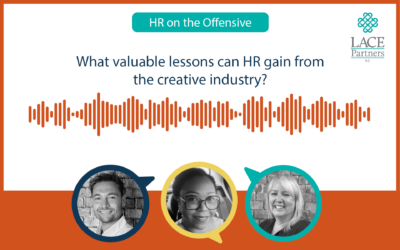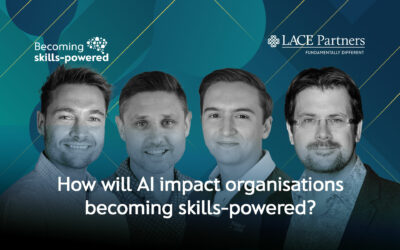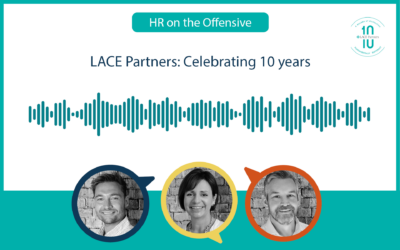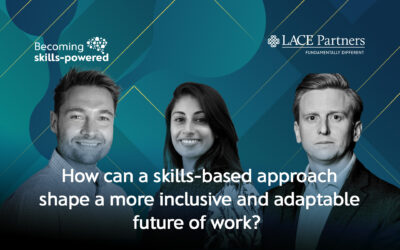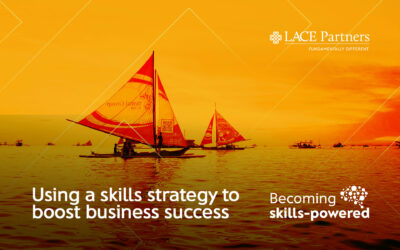Skills based organisations are not a new concept, with global organisations already using skills-based practices and a further 75% of organisations intending to jump into a skills-based model in the next five years, according to our ongoing survey so far.
Why? Because it can boost productivity whilst helping to retain your high performers with broader development opportunities and a personalised career aligned to their ambitions. The benefits are well documented, however, the journey to get there can seem opaque.
There are differing views on how critical it is to build an enterprise-wide skills framework to begin your journey, or whether you start small and expand from there. For more details about the broader skills foundations read this article’s sister blog.
If you’re keen to get going quickly, we are all about being practical, starting with a minimum viable product, which you can achieve with our framework below.
Your LACE three-step skills guide:


Stage one: The problem statement
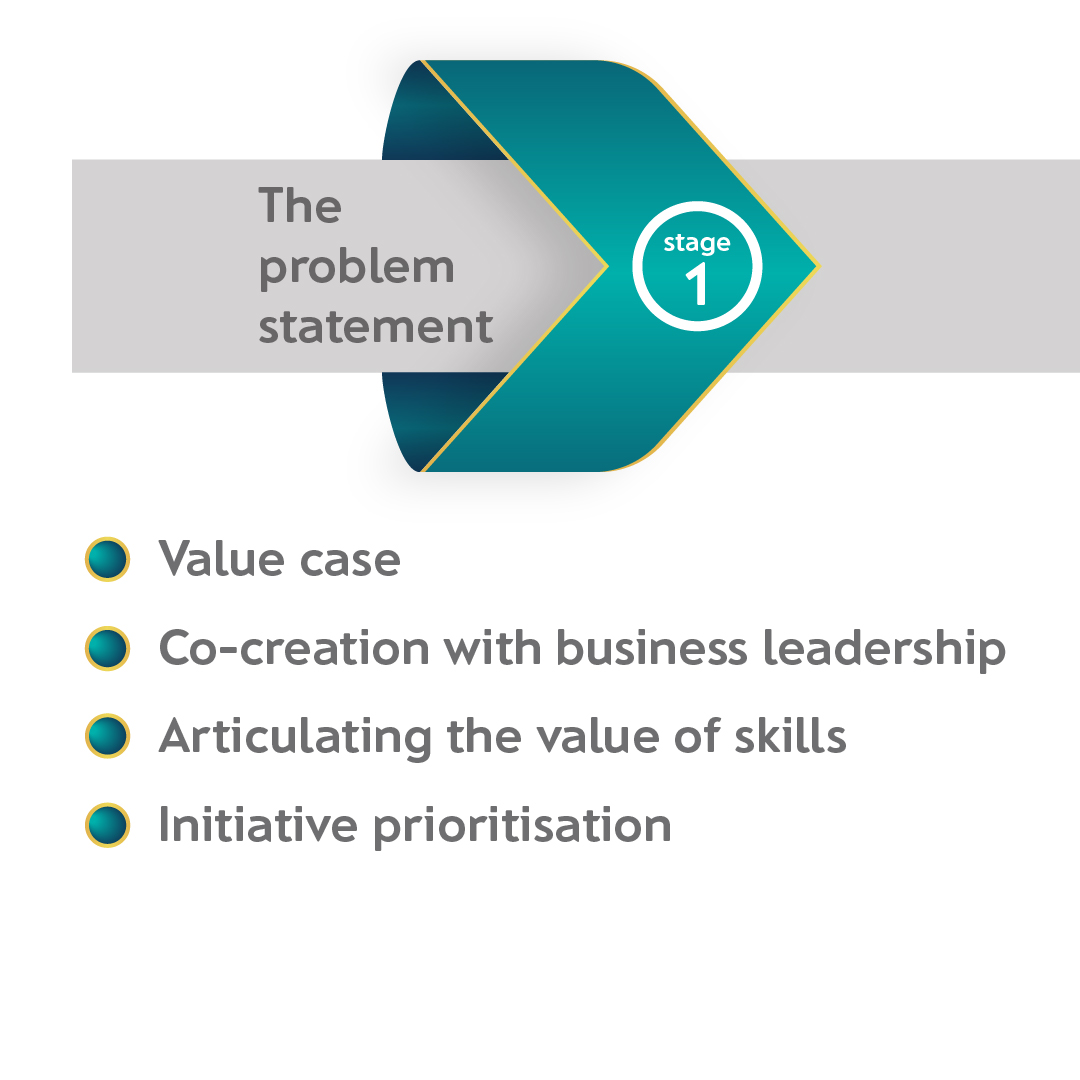
HR has often been accused of designing products and initiatives that are misaligned with the needs of the business. We recommend working with specific business functions to identify the talent challenges they need addressing – not every business function has the same skillsets so do not expect the needs of the business or workforce to be the same.
Once you have a set of problem statements, you can clearly articulate why you are taking a skills-based approach, where you are starting and what the expected benefits will be.
Build your value case:
• What problems are you looking to fix or opportunities you want to harness?
• Which skill sets will this enable the organisation to develop?
• What is the value and cost required to enable this change?

We talk about ‘value case‘ rather than ‘business case‘ as it should cover everything from the financial impact to the improvements to productivity, operations and employee engagement.
Co-create the approach with business leadership:
• Which skills-based talent initiatives will we prioritise?
• What needs to be in place to make this successful?
• Who needs to be involved in the design and implementation?
Articulate the value of skills:
• What is your short-term and ongoing plan for change management?
• How can you enable your line managers to be change champions for your skills approach?
Stage two: A skills taxonomy
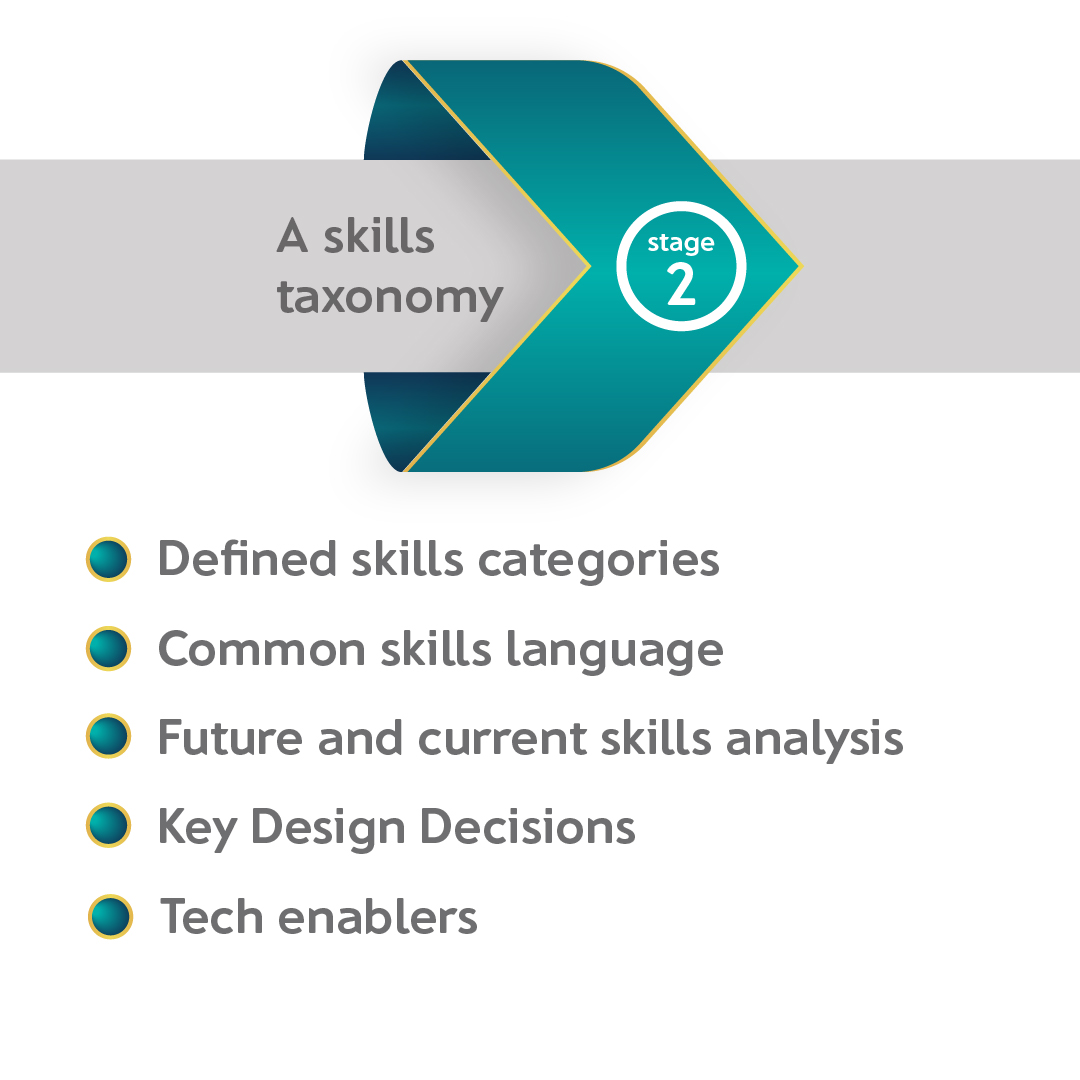
You probably know everything there is to know about your employees’ job history, compensation, and even the frequency of their performance check-ins, but could you see what skills and hidden talents they have and what they need to build to meet their goals?
Creating a skills taxonomy will enable you to move quickly towards a skills-based approach, without having to perform open heart surgery on your job and talent architecture. Its purpose is to create a common language for skills.
Define your skills categories:
• What are your technical skill categories?
• What are your behavioural skills linked to your culture?
• Are there skills that are unique to our organisation or business area?
Identify the shifts in skills:
• Will these skillsets evolve in the nexttwo to three years?
• How expensive are these skills to buy?
• Are any there any expired skills?
Make Key Design Decisions (KDDs):
• Data: What data do I already collect that can populate the skills taxonomy?
• Design principles: What is your approach to mapping skills to your existing talent?
• Technology: How can technology bring the skills taxonomy to life?
What can expedite the skills taxonomy process?
The big HR vendors such as Workday, Oracle and SAP SuccessFactors offer functionality that will help you start to capture and assess a skills taxonomy, using AI to analyse vast amounts of data from multiple internal sources. Alongside this there is a wealth of more specialised vendors (some of which you’ll meet through this campaign) that use external job market data to build a more global view of skills.
Stage three: Targeted skills-based approaches
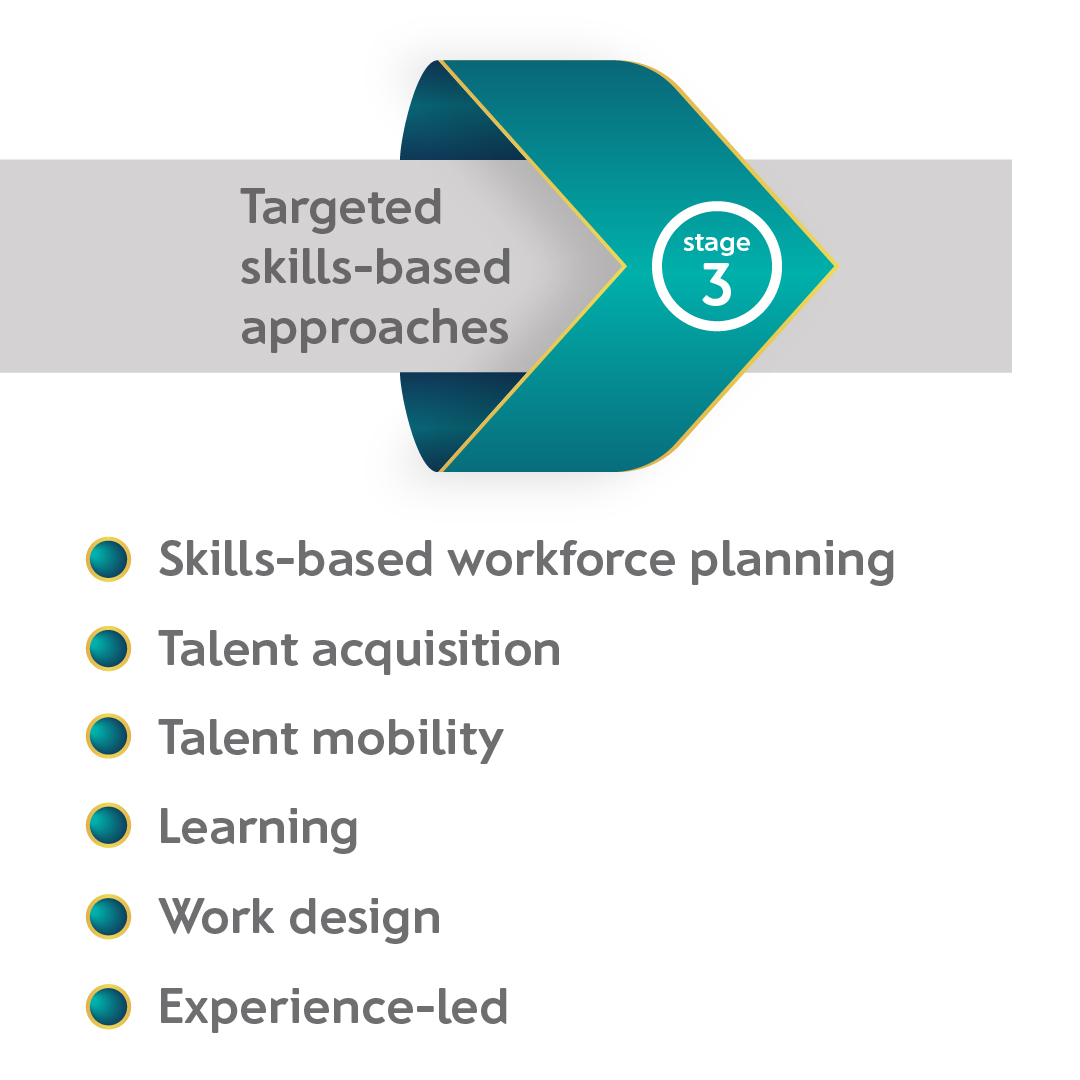
You may have captured initial ideas when developing the value case but now you can design and activate skills-based initiatives.
Many organisations jump straight to a talent marketplace as though it is the only way to benefit from skills-based practices. However, looking across the employee lifecycle can pinpoint the right solution to design.
Skills-based approaches can be applied across the employee lifecycle, but fear not – you do not have to do all at once.
Read through our examples of targeted skills approaches below.
Skills-based workforce planning:
“What are the skills I need and where are they?”
An approach to workforce planning that forecasts the skills required to meet business outcomes. It focuses on the skills required rather than the existing or pre-defined job roles.
Why start here? Organisations choose to start here so that they can plan a roadmap of other skills-based talent initiatives based on the forecast ahead. This can inform skills-based talent attraction, mobility, succession planning and learning initiatives.
Talent acquisition:
Start with “what can you do?” not “what have you done before?”
Sourcing internal and external talent based on skills rather than previous job titles or experience or formal educational attainment. This approach broadens the potential talent pool and emphasises assessing potential.
Why start here? Organisations expand their existing approaches for early careers to get a head start.
Talent mobility:
Deploy skills to where they are needed
People with the relevant skills move around the organisation to where they are needed both to deliver the work but also continue to build their own skills. This is enabled by short or long-term projects that enable employees to design their own career path.
Why start here? Organisations with strong leadership buy-in for skills, that have a strong value case start here as it releases value quickly.
Skills focused learning:
Practical learning to re-skill and up-skill the workforce
Emphasising practical learning that can be done on-the-job to perform work either now or in the near-future. Re-skilling and up-skilling combine bitesize learning reinforced through project-based experience or work shadowing.
Why start here? Industries that are experiencing a workforce skill transition due to technological advancements or changing of market demands (e.g. Energy companies, Financial Sector, Technology) require a scalable skills-based learning approach.
Work design:
A new approach to work that is structured around skills and embraces automation
Organising roles and responsibilities by skills and competencies required to perform the work, including where technology can reduce workload. This dynamic approach means that capacity can be re-focused into re/upskilling or even other project-based work.
Why start here? Organisations that have some skills foundations in place that have a workforce that are often flexible in the way that they work today or are seeing significant automation in their work.
Skills-based reward:
“Incentivising skills for life”:
Building new skills / competencies or using those skills on a project is recognised through the performance and recognition processes; this could be monetary or non-monetary recognition processes and the skills being development must be relevant to the organisation.
Why start here? There is already some skills that have been prioritised, but engagement has been low from employees.
We believe in taking an employee experience-led approach to design. Whichever talent initiative you decide to start with – we recommend collaboratively designing with employees and managers.
So, am I ready to start my journey towards a skills-based organisation?
If you have a clear value case, the right language in place to talk about skills and targeted skills-based approaches or initiatives – you are ready.
Many organisations have been able to get started with a pilot area without fundamentally changing their job architecture or creating an enterprise wide skills taxonomy. Your decision should be driven by the specific problem you are trying to solve, with targeted skills-based initiatives to solve it.
The journey to become skills based requires a test, learn and adapt approach allowing you to build more into your framework and approach as you learn.
Remember to share this progress and bring leaders from non-pilot areas on board, increasing intrigue and excitement in this cultural movement that is linked closely to achieving the long-term goals of your organisation.
This is only the very start of our Becoming skills-powered campaign, sign up via the form below to stay in the loop with what’s to come and be first in the line for any in-person or virtual events.
Coming up next? How to build a skills strategy to boost business success.

